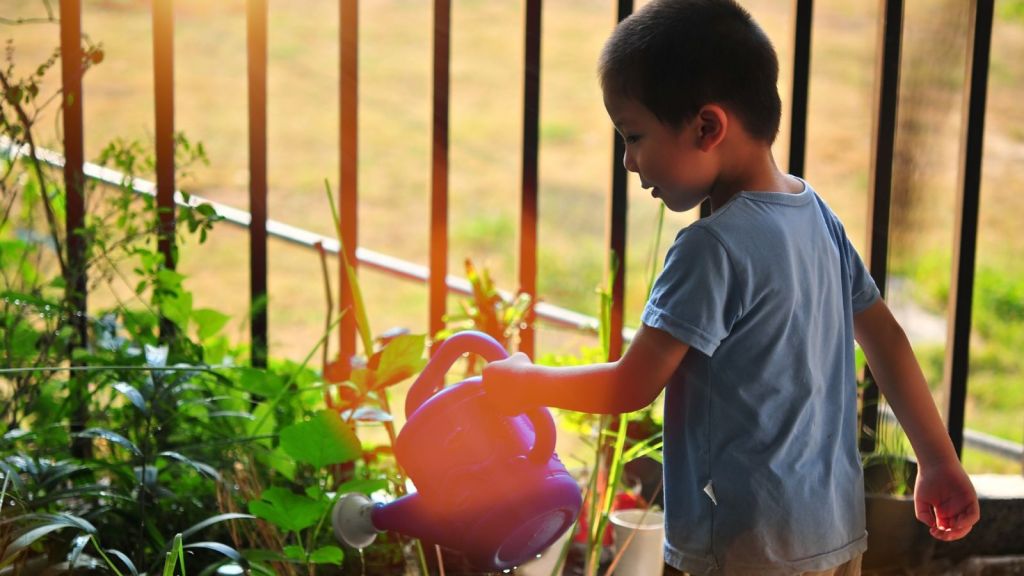Having indoor plants is like bringing a touch of the wild into your home. They breathe life into spaces, make them lively, and are more than just pretty faces in pots. Did you know they also act as natural air purifiers? Yep, these leafy buddies soak up pollutants and give us fresh oxygen. But remember, the indoors isn’t their original home, so they need more attention here. If you want to keep your green friends healthy and thriving, this guide about caring for your indoor plants is for you.
Tip 1. Understanding Your Plant’s Needs
Before you can provide optimal care, you need to understand the individual requirements of each plant. Each species has evolved over millennia to adapt to specific environments. Consider where your plant comes from – a desert or a humid jungle? This can give clues to its preferences. For instance, cacti thrive in sandy, well-draining soil and occasional watering, while ferns prefer moist environments and regular misting.
Tip 2. Light
Plants use light for photosynthesis, a process where they convert light into energy.
- Natural Light: Positioning is key. While many indoor plants tolerate low light conditions, few can survive without light. Ensure they receive, at minimum, indirect light.
- Artificial Light: LED grow lights are a great modern option, emitting specific light spectrums ideal for photosynthesis without overheating your plants.
- Rotating Plants: Just like humans need balanced diets, plants need balanced light. Regularly turning your plant ensures that all its parts receive adequate sunlight, promoting even growth.
Tip 3. Water

Watering seems simple but is often done incorrectly.
- Overwatering: It’s not just the frequency but the amount. Root rot occurs when roots sit in stagnant water. To avoid this, ensure your pot has drainage holes, and the soil dries out between watering.
- Under-watering: If the leaves look shriveled or feel crispy, it’s a sign your plant needs water. Always water thoroughly, allowing it to reach the deeper roots.
- Humidity: Especially for tropical plants, humidity is as crucial as water. Placing a tray with water near your plants or using pebble trays can also increase humidity.
Tip 4. Soil and Repotting
Your plant’s soil is its home.
- Choose the Right Soil: Different plants need different soil structures. Succulents prefer sandy soils, while orchids thrive in bark-based mixes.
- Repotting: Besides giving them space, repotting refreshes the soil, providing new nutrients. When repotting, be gentle with the roots and give them room to spread.
Tip 5. Fertilizing
Think of fertilizers as plant food.
- Balanced Fertilizer: It’s essential to provide a balanced diet. Over-fertilizing can “burn” the roots due to excessive salts.
- Seasonal Feeding: During the growth phases, plants use more nutrients. However, during dormant periods, they require less. Adjust accordingly.
Tip 6. Pest and Disease Management

- Regular Checks: By checking your plants, you can catch infestations early. Use a magnifying glass to inspect underneath leaves.
- Natural Predators: Instead of chemicals, beneficial insects can help control pests. Lacewings and predatory mites are useful. Sometimes, these plants may be affected by soil mites. You need to know the natural ways to get rid of soil mites to keep them pests-free and healthy.
- Isolation: A new plant can bring pests. Always quarantine new plants for a few weeks before introducing them to your plant family.
7. Pruning and Cleaning
Grooming your plants promotes healthy growth.
- Pruning: You redirect energy to healthier growth areas by trimming dead or overgrown parts.
- Cleaning: Dusty leaves can’t absorb light efficiently. Cleaning them not only helps photosynthesis but also keeps pests away.
8. Create a Routine
Just like pets, plants thrive on routine.
- Weekly Check: Setting a specific day for plant care ensures you always remember to water, prune, or check for pests.
- Seasonal Adjustments: Your care routine should evolve as the environment changes with the seasons. Keep track of sunlight shifts, temperature variations, and humidity changes.
Every plant has its rhythms. Recognize that sometimes a plant appearing “dead” is merely dormant.
More Tips
- Air Circulation: Plants breathe. Good air circulation ensures they get fresh air, aiding in photosynthesis and reducing fungal infections.
- Avoiding Drafts: Rapid temperature changes stress plants. Keep them away from air conditioners, heaters, and drafty areas.
- Vacation Care: If you’re away, ensure plants are watered. Consider using self-watering pots or ask a friend for help.
Conclusion
Caring for indoor plants is a rewarding endeavor that requires attention, understanding, and a little love. Each plant is unique, but with the right environment and care, they can flourish and bring joy, good-quality air and serenity to your space. By following this guide, you’re on your way to becoming a true indoor gardener. Happy planting!
















![[GHC Featured Image] 9 Tips On Taking Care of Your Indoor Plants taking care of your indoor plants featured image](https://greenhousecenter.net/wp-content/uploads/2023/09/GHC-Featured-Image-9-Tips-On-Taking-Care-of-Your-Indoor-Plants-696x392.jpg)


